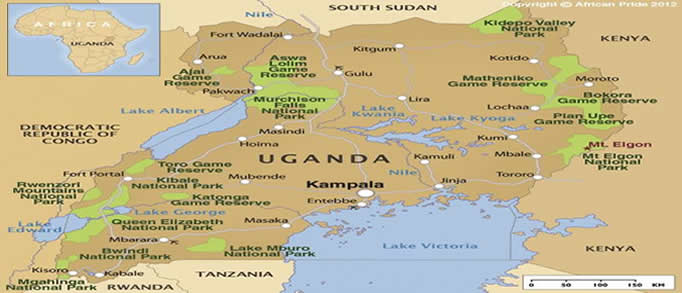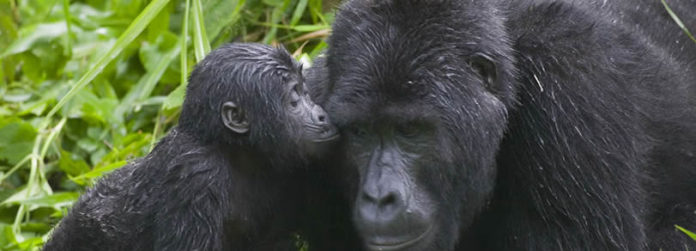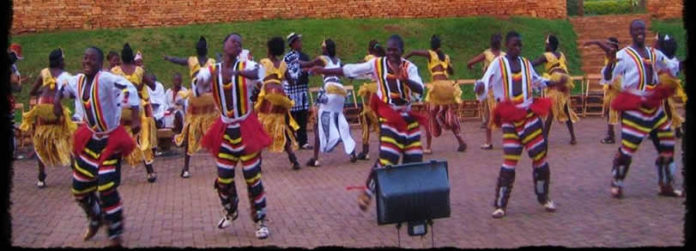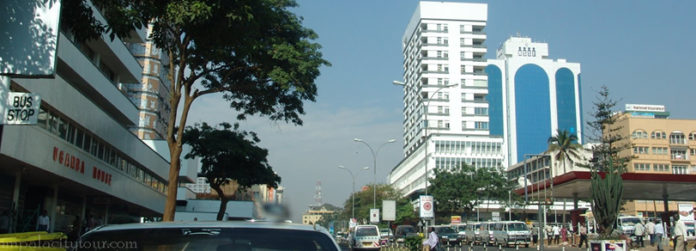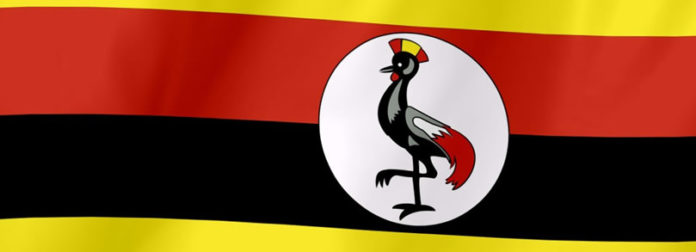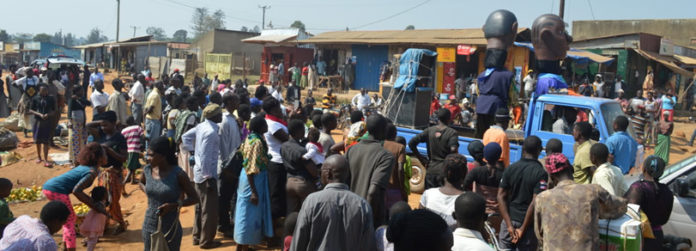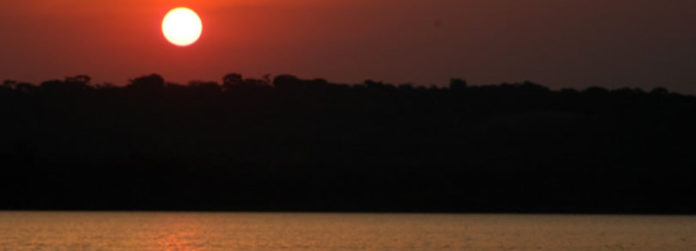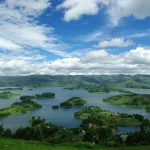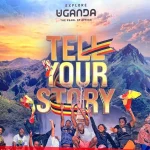UGANDA GOVERNMENTType: Republic.
Constitution: Ratified July 12, 1995; promulgated October 8, 1995.
Independence: October 9, 1962.
Branches: Executive–president, vice president, prime minister, cabinet. Legislative–parliament. Judicial–Magistrates’ Courts, High Court, Court of Appeals (Constitutional Court), Supreme Court.
Administrative subdivisions: 112 districts.
Political parties: 38 registered parties. Major political parties include the National Resistance Movement (NRM, the ruling party), Forum for a Democratic Change (FDC), Democratic Party (DP), Conservative Party (CP), Justice Forum (JEEMA), and Uganda People’s Congress (UPC), among others.
National holiday: Independence Day, October 9.
UGANDA’S ECONOMYGDP (nominal, 2009): $16.04 billion.
Natural resources: Copper, cobalt, hydropower, limestone, salt, phosphate, oil.
Agriculture: Cash crops–coffee, tea, cotton, tobacco, cassava (tapioca), potatoes, corn, millet, cut flowers. Food crops–bananas, corn, cassava, potatoes, millet, pulses. Livestock and fisheries–beef, goat meat, milk, poultry, Nile perch, tilapia.
Industry: Processing of agricultural products (cotton ginning, coffee curing), cement production, light consumer goods, textiles.
Trade: Exports (2009)–$3.1 billion: coffee, fish and fish products, tea, tobacco, textiles, cement, maize, electricity. Major markets–EU, Sudan, Kenya, Democratic Republic of the Congo, Switzerland, Rwanda. Imports (2009)–$4.3 billion: petroleum, road vehicles, cereals, industrial machinery, iron and steel, medical/pharmaceutical supplies. Major suppliers–EU, United Arab Emirates, Kenya, India, China. Japan
Fiscal year: July 1-June 30.
Tourism in Uganda
Uganda is famous as the premier safari destination in Africa teeming with abundant wildlife and wetlands and it’s not surprise that safari activities are at the top of every vacationer’s “must-do” list. Tourist attractions consist of sparkling waterfalls, wetlands and rain forests filled with wildlife, and the untouched wilderness of Bwindi where Batwa tribe still lives without any contact with the rest of the world. But a vacation in Uganda is not complete without making time to visit with local people, explore Uganda’s culture and heritage sights, gorilla safaris and do a little shopping for that “just right” souvenir to remind you of your perfect Uganda vacation. Sooth and expect your soul to be touched forever with a safari experience since Uganda is synonymous with wildlife and nature. Here, you’ll find the Big Five, birds, primates but so much more – myriad species amid dramatic, unspoiled landscapes.
From Entebbe zoo to Ssese islands a World for marine wildlife or up north to Kidepo national park with its nearby endangered Ik culture, a host of smaller game reserves and Sipi falls in north eastern Uganda, or down south to wildlife and striking land scapes or inland fresh lakes with stunning islands or gorge – there’s wildlife aplenty not far from Kampala. While Kampala is a busy urban centre, a few hours’ drive from the city lounge a number of phenomenal wildlife destinations.
Bird watching
Wonderful birds of all shapes and sizes call Uganda home. Among them, see African skimmer, African fin foot, the lesser and greater flamingos. Learn more about how these fascinating creatures survive in such tropical environment. Be awed by a great deal of birds of prey, including 54 larger raptor species. As an added bonus, look out for game such as elephants and buffalos. It could take a lifetime to spot all Uganda’s birds since there are over 1000 bird species. But even if you’re only here for a short birding visit, you’ll still be able to tick off plenty while bird watching in our habitats that include wetlands, tropical forests, riverine forests and woodland savannah and then there are the lakes.
Birding in Uganda is amazing whether you’re on safari, cruising round the national parks, hiking Rwenzori Mountain or sunning yourself by the lakes, you won’t be far from bird watching opportunities. Many birders come for the endemics, those species found in Uganda and nowhere else. The grey crowned crane (Uganda’s national bird), green breasted pitta, shoe bill and martial eagle are among those endemics. If you’re in Queen Elizabeth National Park, look out not only for the Big Four, but also birds: the Martial Eagle, Black-rumped Buttonquail, African Skimmer, Chapin’s Flycatcher, Pinkbacked Pelican, African Broadbill, Verreaux’s Eagle Owl, Black Bee-eater, White-tailed Lark, White-winged Warbler, Papyrus Gonolek, Papyrus Canary, Corncrake, Lesser and Greater Flamingo, Shoebill, Bar-tailed Godwit and watch the oxpeckers busily hoovering up ticks and insects from the hides of antelope, buffalo and elephants.
There are some great birding routes all over Uganda and some take just a few hours, others a day or more. Get in touch with one of our many thriving birders for local information on the best routes and times to visit. Birding in Uganda can be a lark literally and metaphorically. So keep your eyes open. Go on an afternoon bird watching hike or if that doesn’t take your fancy, take twilight or dusk drive. Crown your day with a lovely meal and sundowners at your luxurious camp, recalling your day’s encounters and sightings of Uganda’s exquisite bird world.
Adventure Safaris in Uganda
Uganda is the ultimate destination for the action-seeking traveller. A country blessed with rugged terrains, imposing mountain ranges and stunning scenery has become a more sought-after holiday spot in recent years. However you define adventure, it’s possible in Uganda. If you are ready for excitement and adventure under a starry African sky, this is the place for you and your family. We can conjure up your wildest expectation and more: Safaris and game parks are a necessity to visit as all of the Big Five on display seeing, diving on bungee jumping, death defying adventure sports like rafting, kayaking or discovering the humanity and generosity of other cultures. Name your adventure we’ll make it happen. Water based sports and mountain hiking are common in Uganda and visitors to these national treasures will be blown away by their intricate designs and abundant wildlife on offer.
Theme parks
Let the good times roll! Go to prominent fun and amazing wonder world Kansanga for all circus related games and adventure, play like a Queen in garden city; test your water prowess at freedom City. Our fun-packed theme parks across the city will keep the smile on your face for days.
Shopping in Uganda
From jammed but fascinating markets filled with collectable handicrafts, to glitzy malls in our big city with the latest must have name brands, more so because our favorable exchange rate makes your retail therapy last longer too. Uganda’s shopping centers provide world-class shopping, plenty of entertainment, the latest movies and delicious food in conveniently situated and safe surroundings.
Whether you are looking for something specific, have time on your hands to browse around or just love to shop, the boutiques, chain stores and specialist shops in the country’s malls have it all. The quality, cost and variety of goods on offer along with the safe, sophisticated environment provided by Uganda’s shopping centers should not take visiting international holidaymakers and business people by surprise. Uganda’s malls are famous for their excellent shopping and entertainment facilities.
When you leave the country after your holiday or business trip, you will lament the baggage restrictions of the international airlines and wish that you could take more of Uganda home with you! Vacationers can choose from dining and enjoying a drink at local or hotel bars and restaurants, seeing a movie at the cinema, attending a theatrical production at the cultural centre or gambling at one of the two casinos in town. Some bars host live music sessions at weekends. Uganda is known for their woodcarvings, handcrafted jewellery, textiles and attractive basketry – all make a memorable souvenir of your trip.
Beaches in Uganda
We have thousands of miles of glorious shores, with beach gems dotted along its length. Whether you’re a trendy sun worshipper, a water sports fanatic, a beach comber or a family seeking sea and fun Uganda’s got a beach that’s perfect for you.
Nightlife in Kampala
From a night of fine dining to raucous all-night party in Kampala city Ugandans love to have a good time. Let your hair down and live it up in our clubs, pubs, late-night bars, theatres and live music venues. You won’t just find the best wildlife in our game parks…come on, the party’s starting! Experience a sundowner. Sip a cool drink and enjoy a glorious sunset at the end of a satisfying afternoon game drive. In the tourist towns of Kampala, there are a handful of restaurants, cinema and a clutch of places to grab a cold beer with fellow travelers and the friendly locals.
Casinos in Uganda
Bet on having a good time around Uganda. From our most famous Kampala casino for high-rollers to family entertainment venues– we’ve myriad casinos where you can take chance with Lady Luck. Ugandan casinos, including several large entertainment complexes, can be found countrywide. These entertainment destinations are typically designed around a specific theme and include a large range of activities for the whole family. Many are also geared towards business tourism, providing hotels and conferencing facilities as well. Uganda’s casinos can be found on the fringes of most major centers. The emphasis is on being a one-stop leisure destination, with access to both indoor and outdoor entertainment. In Uganda, casinos are designed around a specific theme, offering a vision of life somewhat different from the run of the mill expectation of Africa. Nor are they typical casinos, most offering entertainment that goes beyond the usual slots and gaming tables. Among the most popular casinos in Uganda is the famed Kampala casino, in the city centre. Garden city is as famous for its golf course, game drives and outdoor activities as it is for gambling.
Walking Safaris
Guided walking safaris are typically a 3 to 4 hour activity in Queen Elizabeth, Lake Mburo and Kibale national park. This type of safari provides a different, and highly recommended, perspective by moving slowly over the ground.
Horseback riding – Lake Mburo national park is one of fewest parks that offer horseback riding in safari Uganda, but for the adventurous this is an experience not to be missed.
Uganda is a land of immense natural beauty with diverse terrain and landscapes of which Lake Mburo national park with a lush emerald paradise of swamps and Precambrian metamorphic rocks, rich savannah grasslands is undoubtedly living proof of. On horseback you can truly absorb the magnificence of park like unique spectrum of ecosystems that supports an unbelievable variety of bird, plant and wildlife waiting to be discovered.
Venture further into the park and get much closer to the abounding wildlife. Encounter exciting moments along the game trails as your horseback safari ride brings you upon great herds of buffalo, zebra, elands and other antelopes. Be assured that this activity is a magical and humbling experience that will touch your soul and remain in your heart for an eternity.
Spot fishing
Go fishing in Nile River and in Lake Victoria to explore a world of untouched, mystical beauty. Take advantage of some of the other activities on offer such as gliding along the scenic waterways of the Nile and Victoria on a dug-out canoe. For game fisherman, the Nile River teems with Nile perch one of the biggest fish species in Uganda. Catch your biggest one yet and be amazed at the size that the fish grow to in these areas. Houseboats offer 360 degrees of lush greenery filled with the music of chirping birds and beautiful waterways and absolutely luxurious living conditions. Glide through the Nile and Lake Victoria fringes to find fish-rich water
Accommodation in Uganda
Uganda has a wide range of hotels; safari lodges, apartments, guesthouses in all the different districts with in the country. The distributed of hotels in Uganda is good – every district has luxury, midrange and budget hotels and are suitable for all kinds of travelers
